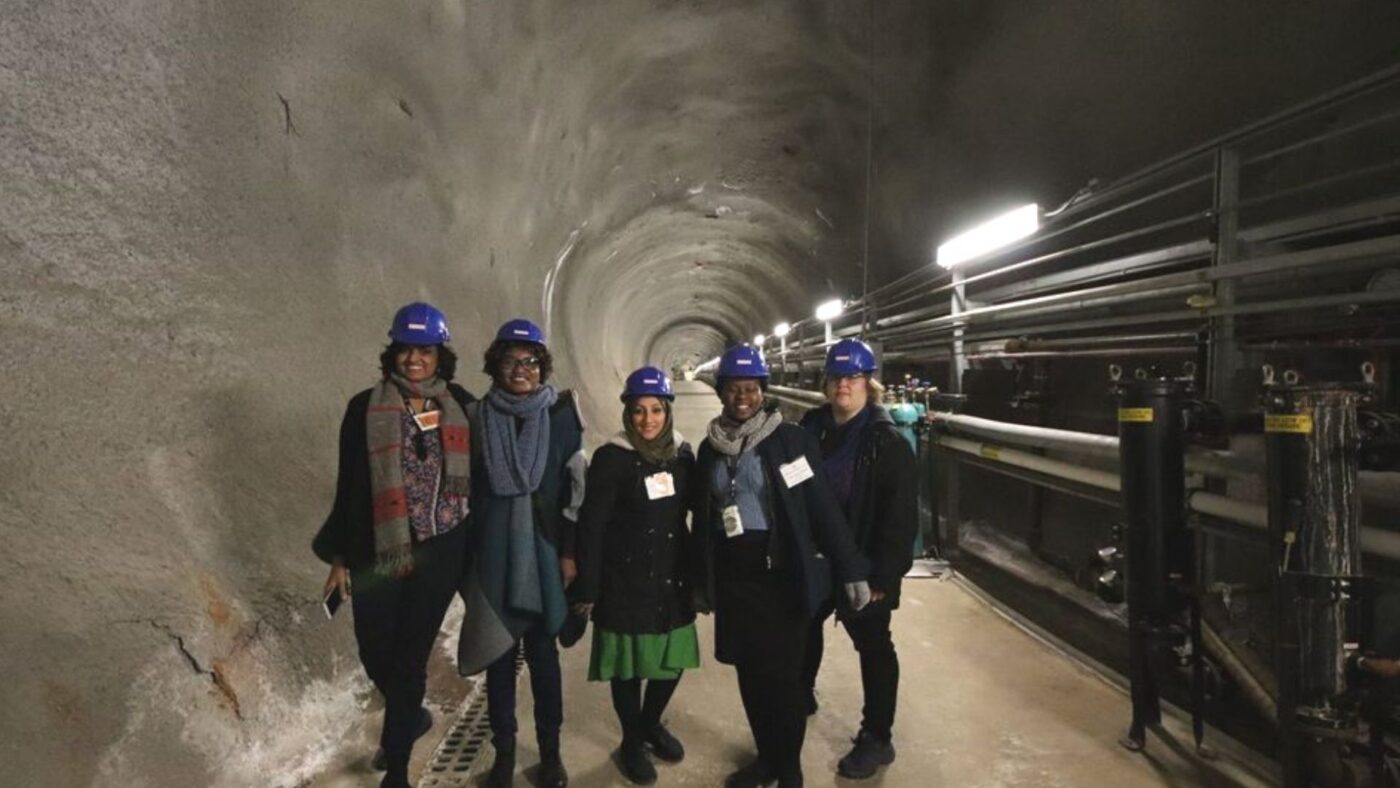Science writer Nandita Jayaraj shares her experience of participating in the U.S. State Department’s IVLP project on advancing women in STEAM fields.
March 2019

Science writer Nandita Jayaraj (left) and other International Visitor Leadership Program participants at Fermi National Accelerator Laboratory in Illinois. Jayaraj was part of a multiregional project on “Advancing Women in STEAM Fields.” Photograph by Anna Fucikova
For Nandita Jayaraj, science writing was an accidental discovery. “All through my childhood, I wrote, but never harbored any dreams of making a profession out of it,” she says. After earning a degree in journalism, she joined The Hindu, writing for the children as well as the science sections of the newspaper. But it was at Brainwave, a Bengaluru-based children’s science magazine, where she realized that science journalism was a viable profession and found her true niche. She met science editor Aashima Dogra and together, they created The Life of Science project. The website focuses on women scientists in India, chronicling their work and experiences.
In 2018, Jayaraj was selected to be part of a multiregional project of the U.S. State Department’s International Visitor Leadership Program (IVLP) on “Advancing Women in STEAM Fields.” The exchange program provided an opportunity to explore organizational and educational policies designed to champion the interests of women in science, technology, engineering, arts and mathematics—a grouping commonly referred to by the acronym STEAM. It brought together 50 women working in STEAM fields in 50 countries and territories around the world for the one-of-a-kind exchange program, “Hidden No More,” in the United States.
The early sessions on the structures and functioning of the U.S. government and federalism, says Jayaraj, helped put into context the different experiences and conversations they had over the next few weeks of the program.
“The policies and gender equality programs [related to STEAM fields] were different depending on the state and institution, but the one thing they had in common was a sensitive approach to women’s issues and an acknowledgment of gender bias,” she says. “I was particularly impressed by the National Institutes of Health’s Scientific Workforce Diversity office, headed by Chief Officer Dr. Hannah Valantine.” Dr. Valantine works to diversify the biomedical research workforce by expanding recruitment and retention, and promoting inclusiveness and equity. Jayaraj was also heartened to learn that several grants, like those offered by the National Geographic Society, have provisions to encourage and support the participation of women. “For example, dependent care assistance, which allows the grantees to use the funds to cover childcare or eldercare expenses, is one,” she says. “This is important because it is directly linked to productivity and will go a long way in nurturing potential and talent.”
For Jayaraj, the program was also a chance to examine the close links between diversity and effective policymaking. “Dana Hurley, planetary scientist at the Johns Hopkins University Applied Physics Laboratory, reminded us that ‘in diverse crowds, people are more considerate of different viewpoints,’ ” she says.
The various sessions examined the effects of the current exclusionary policies and infrastructure existing worldwide in science, which are most likely the result of a non-diverse body of policymakers. “We end up losing huge amounts of talent and diversity of thought,” says Jayaraj. “It’s not just certain individuals or women who suffer because of this. It is science; the entire field.”
The participants also interacted with people from the film and entertainment industry and learned how they use science and scientific content in their work. “Since the program was, after all, inspired from a Hollywood movie ‘Hidden Figures,’ this made sense,” says Jayaraj.
Although most of the program involved meetings with people at U.S. institutions, there were also opportunities to exchange views and ideas with the 49 other women working in STEAM fields. “This was really important for us from developing nations because, often, we had more in common with each other than those from the United States,” she explains. “Talking to them about what has worked and what hasn’t gave me a better idea of what can work in India. There are several collaborations underway. The underlying idea is that we need not try and reinvent the wheel unless we absolutely have to.”
Her many interviews with women scientists for The Life of Science have shown that women in science have to work several times as hard as men to accomplish the same thing. “This is true for members of all marginalized groups around the world,” she says. Jayaraj believes, her understanding of the situation has become more nuanced and she looks forward to sharing her insights from the exchange visit with the scientific community in India.
Paromita Pain is an assistant professor of Global Media Studies at the University of Nevada, Reno.
COMMENTS